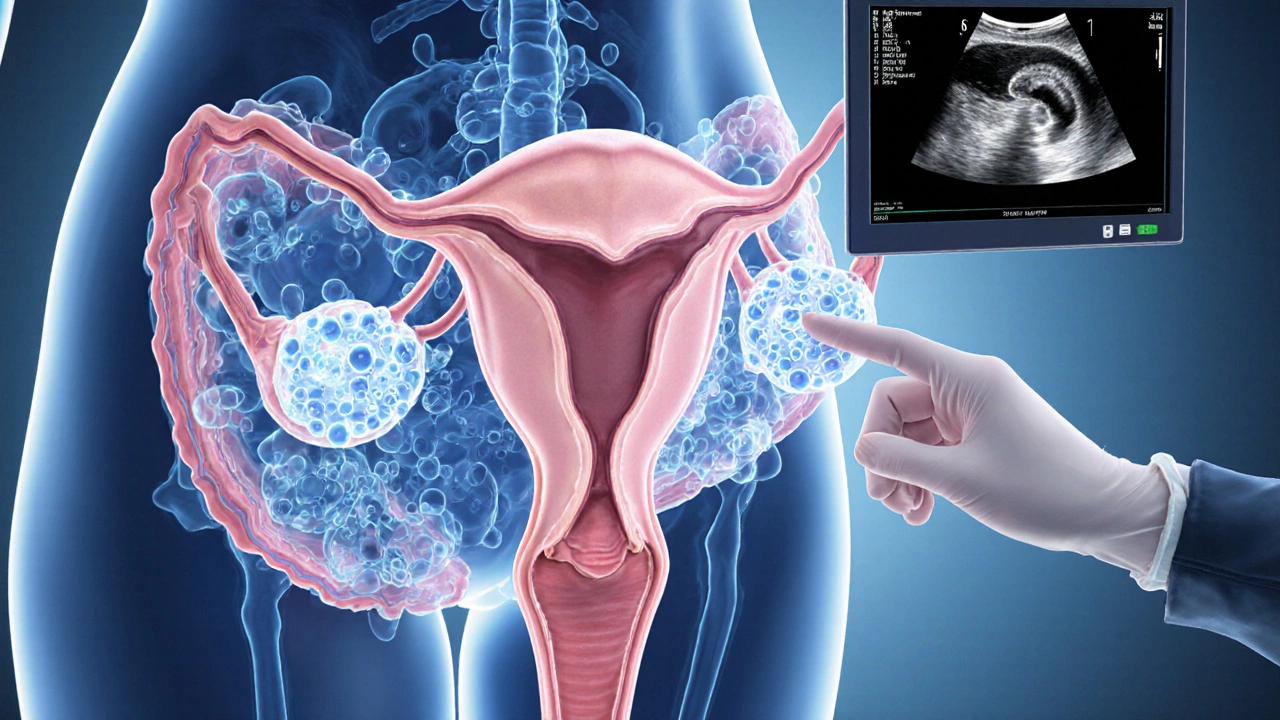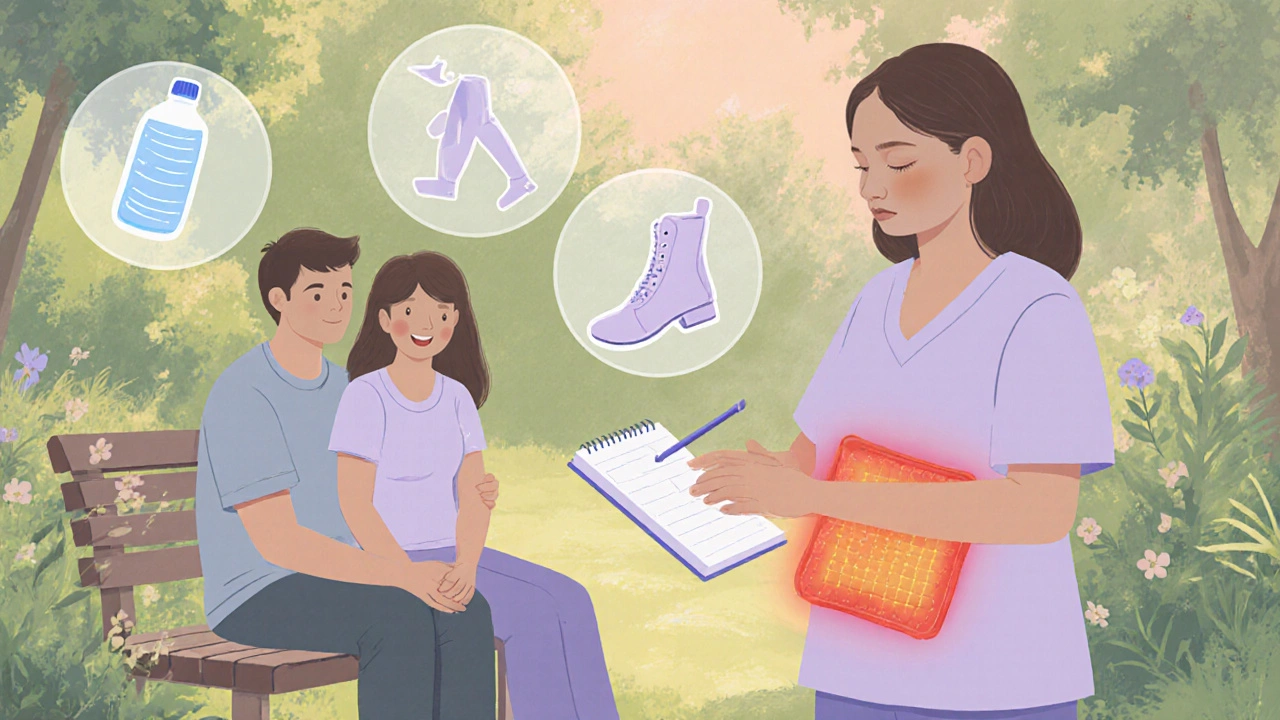IVF Side Effects: Risks, Symptoms & What to Expect
 Oct, 14 2025
Oct, 14 2025
IVF Side Effects Assessment Tool
This tool helps you assess your risk of common IVF side effects and identify warning signs that may require medical attention. Based on data from the article, most side effects are mild and temporary, but it's important to know when to seek help.
Assessment Results
Urgent Medical Attention Required
This may indicate a serious complication. Contact your healthcare provider immediately.
Quick Takeaways
- Most side effects are short‑term and mild, like bloating, mood swings, and mild cramping.
- Ovarian hyperstimulation syndrome (OHSS) is the most serious short‑term risk, affecting about 1‑5% of cycles.
- Procedural risks such as infection or bleeding from egg retrieval occur in less than 1% of cases.
- Long‑term concerns (e.g., pregnancy complications or birth defects) are rare and comparable to natural conception.
- Know the warning signs that need urgent medical attention, and have a plan to manage everyday discomfort.
When couples consider assisted reproduction, the first question is often "IVF side effects". Understanding what to expect helps reduce anxiety and lets you make informed choices. Below we break down the most common and rare reactions, why they happen, and how to cope.
IVF is a set of laboratory and medical procedures that combine an egg with sperm outside the body, then place the resulting embryo(s) into the uterus. The process typically involves hormone stimulation, egg retrieval, fertilisation, and embryo transfer. While IVF has helped millions achieve parenthood, the hormone‑driven steps can trigger a range of side effects.
Why Hormones Trigger Most Side Effects
The first phase of IVF uses gonadotropins (synthetic versions of follicle‑stimulating hormone and luteinising hormone) to coax the ovaries into producing multiple eggs. Higher hormone levels explain why many side effects are systemic-affecting the whole body rather than a single organ.
Common Short‑Term Effects (First Few Days to Two Weeks)
- Bloating and abdominal distention: Hormonal surge increases fluid retention. The feeling usually peaks after the egg‑trigger shot and fades within a week.
- Breast tenderness: Estrogen and progesterone cause the breast tissue to swell, similar to early pregnancy symptoms.
- Mood swings, irritability, and anxiety: Hormone fluctuations affect neurotransmitters, making emotions roller‑coaster‑like. Keeping a journal helps track patterns.
- Headaches: Common with the high‑dose gonadotropin regimen; over‑the‑counter analgesics work for most patients.
- Spotting or light bleeding: The luteinising hormone (LH) trigger can cause a brief uterine lining shedding.

Ovarian Hyperstimulation Syndrome (OHSS)
Ovarian hyperstimulation syndrome, often shortened to OHSS, is the most talked‑about complication. It occurs when the ovaries over‑react to stimulation, becoming swollen and leaking fluid into the abdomen and chest.
Severity is graded:
- Mild: Abdominal bloating, mild pain, occasional nausea.
- Moderate: More noticeable pain, vomiting, rapid weight gain (>500g in 24h).
- Severe: Large fluid buildup, shortness of breath, blood clots, kidney impairment. Hospitalisation may be required.
Risk factors include young age, low body weight, high estradiol levels, and retrieving more than 15 eggs. Clinics monitor blood tests and ultrasound to catch early signs and often adjust medication to lower the risk.
Procedural Risks: Egg Retrieval and Embryo Transfer
The egg‑retrieval step is performed under light sedation, using a needle guided by ultrasound. While safe, a few complications can arise:
- Bleeding: Minor spotting is normal; serious bleeding is rare (<1%).
- Infection: Prophylactic antibiotics lower risk, but fever or foul discharge after the procedure should prompt a doctor’s visit.
- Damage to surrounding organs: Extremely uncommon, but the needle could graze the bowel or bladder.
Embryo transfer involves passing a thin catheter through the cervix. The main concerns are:
- Cervical irritation or mild cramping: Usually disappears within a day.
- Uterine contractility: Excessive cramping can expel the embryo; clinicians sometimes prescribe a mild progesterone supplement to calm the uterus.
Hormonal Side Effects Beyond the First Cycle
Even after the fresh cycle ends, hormone levels linger for weeks.
- Weight fluctuations: Fluid retention may cause temporary weight gain; returning to baseline often takes 2‑3 weeks.
- Thyroid changes: High estrogen can increase thyroid‑binding globulin, mildly affecting thyroid function tests.
- Skin changes: Some patients notice acne flare‑ups or darker patches (melasma) from estrogen.
Long‑Term Considerations
Once pregnancy is confirmed, many of the IVF‑related side effects fade. However, a few longer‑term issues deserve attention.
Pregnancy Complications
Studies from the UK and US show a slightly higher incidence of pre‑eclampsia and placenta previa in IVF pregnancies, especially when multiple embryos are transferred. The absolute risk remains low (around 5‑7% for pre‑eclampsia compared with 3% in natural conception).
Miscarriage Rate
Miscarriage after IVF mirrors natural rates-about 15‑20% for single‑embryo transfers in women under 35, rising with maternal age. The procedure itself isn’t a direct cause; underlying infertility factors play a larger role.
Birth Defects
Large registry data (e.g., the European IVF Consortium) indicate a marginally higher odds ratio (≈1.1) for major congenital anomalies, but the absolute increase is tiny-roughly 1‑2 extra cases per 1,000 births.
Mental Health After IVF
The emotional roller‑coaster continues after a positive pregnancy test or a negative result. Couples often experience anxiety about the pregnancy’s viability, especially in the first trimester. Access to counselling or support groups can mitigate stress.

How to Manage Common Side Effects
Proactive steps reduce discomfort:
- Stay hydrated: Helps flush excess fluids and eases bloating.
- Gentle movement: Light walking improves circulation and reduces ovarian pain.
- Balanced diet: Low‑salt meals limit fluid retention; protein supports tissue repair after retrieval.
- Heat packs: Applying a warm (not hot) pad to the lower abdomen eases ovarian discomfort.
- Medication: Over‑the‑counter NSAIDs for pain, anti‑nausea tablets if needed, and prescribed progesterone or estrogen supplements as directed.
When to Call Your Clinic
Most discomfort is manageable at home, but certain signs demand prompt medical attention:
- Severe abdominal pain that doesn’t improve with a heat pack.
- Rapid weight gain (>1kg in 24h) or significant abdominal swelling.
- Shortness of breath, chest tightness, or coughing up fluid.
- Fever >38°C (100.4°F) after egg retrieval.
- Persistent vomiting preventing oral intake.
Most clinics have a 24‑hour hotline; having it saved on your phone is a smart move.
Summing Up: Balancing Hope with Realism
IVF offers a proven path to parenthood, and its side‑effect profile is well‑documented. Most patients experience mild, temporary symptoms, while serious complications are rare and usually identifiable early. By staying informed, tracking symptoms, and keeping an open line with your fertility team, you can navigate the journey with confidence.
| Side Effect | Typical Onset | Frequency | Management |
|---|---|---|---|
| Bloating & abdominal distention | Day 2‑5 after trigger | Very common (≈80%) | Hydration, light exercise, warm pack |
| Breast tenderness | Day 3‑7 after trigger | Common (≈70%) | Supportive bra, NSAIDs if needed |
| Ovarian hyperstimulation syndrome (OHSS) | Day 5‑10 after retrieval | Rare‑moderate (1‑5%) | Monitoring, fluid management, possible hospitalization |
| Infection after retrieval | Within 7‑10 days | Very rare (<1%) | Antibiotics, prompt medical review |
| Severe abdominal pain | Any time post‑retrieval | Rare | Urgent medical assessment |
Frequently Asked Questions
What is the most common side effect of IVF?
Bloating and abdominal discomfort are reported by the majority of patients, often starting a couple of days after the hormone trigger and usually resolving within a week.
How can I lower my risk of OHSS?
Your clinic can use a lower dose of gonadotropins, consider a “freeze‑all” strategy (no fresh transfer), or trigger ovulation with a GnRH‑agonist instead of hCG. Regular ultrasound monitoring helps adjust the plan before the ovaries become over‑stimulated.
Do IVF pregnancies have a higher chance of birth defects?
Large studies show a very small increase (about 1‑2 extra cases per 1,000 births). The overall risk remains low and comparable to natural conception, especially when single‑embryo transfers are used.
When should I be concerned about infection after egg retrieval?
If you develop a fever above 38°C, experience worsening pelvic pain, or notice foul‑smelling vaginal discharge, contact your clinic immediately. Early antibiotics usually resolve the infection.
Can I continue normal activities during the stimulation phase?
Light to moderate exercise (walking, gentle yoga) is safe and can ease ovarian discomfort. Avoid high‑impact sports or activities that raise abdominal pressure, such as heavy weight‑lifting.